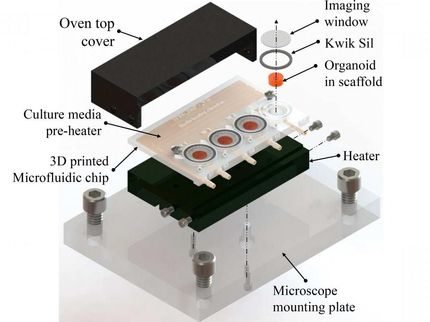How our brains control our arms
Recording the neural activity of monkeys as they plan to reach, or just react, will help engineers design better brain controlled prosthetic limbs
Ready, set, go.
Sometimes that's how our brains work. When we anticipate a physical act, such as reaching for the keys we noticed on the table, the neurons that control the task adopt a state of readiness, like sprinters bent into a crouch.
Other times, however, our neurons must simply react, such as if someone were to toss us the keys without gesturing first, to prepare us to catch.
How do the neurons in the brain control planned versus unplanned arm movements?
Krishna Shenoy, a Stanford professor of electrical engineering, neurobiology (by courtesy) and bioengineering (affiliate), wanted to answer that question as part of his group's ongoing efforts to develop and improve brain-controlled prosthetic devices.
In a paper published in the journal Neuron, Shenoy and first author Katherine Cora Ames, a doctoral student in the Neurosciences Graduate Program, present a mathematical analysis of the brain activity of monkeys as they make anticipated and unanticipated reaching motions.
Monitoring the neurons
The experimental data came from recording the electrical activity of neurons in the brain that control motor and premotor functions. The idea was to observe and understand the activity levels of these neurons during experiments in which the monkeys made planned or reactive arm movements.
What the researchers found is that when the monkeys knew what arm movement they were supposed to make and were simply waiting for the cue to act, electrical readings showed that the neurons went into what scientists call the prepare-and-hold state -- the brain's equivalent of ready, set waiting for the cue to go.
But when the monkeys made unplanned or unexpected movements, the neurons did not go through the expected prepare-and-hold state.
"This was a surprise," Ames said.
Before the experiment, the researchers had believed that a prepare-and-hold state had to precede movement. In short, they thought the neurons had to go into a "ready, set" crouch before acting on the "go" command.
But they discovered otherwise in three variations of an experiment involving similar arm movements.
Experimental design
In all three cases the monkeys were trained to touch a target that appeared on a display screen.
During each motion, the researchers measured the electrical activity of the neurons in control of arm movements.
In one set of experiments, the monkeys were shown the target but were trained not to touch it until they got the "go" signal. This is called a delayed reach experiment. It served as the planned action.
In a second set of experiments the monkeys were trained to touch the target as soon as it appeared. This served as the unplanned action.
In a third variant, the position of the target was changed. It briefly appeared in one location on the screen. The target then reappeared in a different location. This required the monkeys to revise their movement plan.
First monkey see, then monkey do
Ames said that, in all three instances, the first information to reach the neurons was awareness of the target. "Perception always occurred first," Ames said.
Then, about 50 milliseconds later, some differences appeared in the data.
When the monkeys had to wait for the go command, the brain recordings showed that the neurons went into a discernable prepare-and-hold state.
But in the other two cases, the neurons did not enter the prepare-and-hold state.
Instead, roughly 50 milliseconds after the electrical readings showed evidence of perception, a change in neuronal activity signaled the command to touch the target; it came with no apparent further preparation between perception and action. "Ready, set" was unnecessary. In these instances, the neurons just said, "Go!"
Applications
"This study changes our view of how movement is controlled," Ames said. "First you get the information about where to move. Then comes the decision to move. There is no specific prepare-and-hold stage unless you are waiting for the signal to move."
These nuanced understandings are important to Shenoy. His lab develops and improves electronic systems that can convert neural activity into electronic signals in order to control a prosthetic arm or move the cursor on a computer screen.
One example of such efforts is the BrainGate clinical trial here at Stanford, now being conducted under U.S. Food & Drug Administration supervision, to test the safety of brain-controlled, computer cursor systems – "think-and-click" communication for people who can't move.
"In addition to advancing basic brain science, these new findings will lead to better brain-controlled prosthetic arms and communication systems for people with paralysis," Shenoy said.




















































